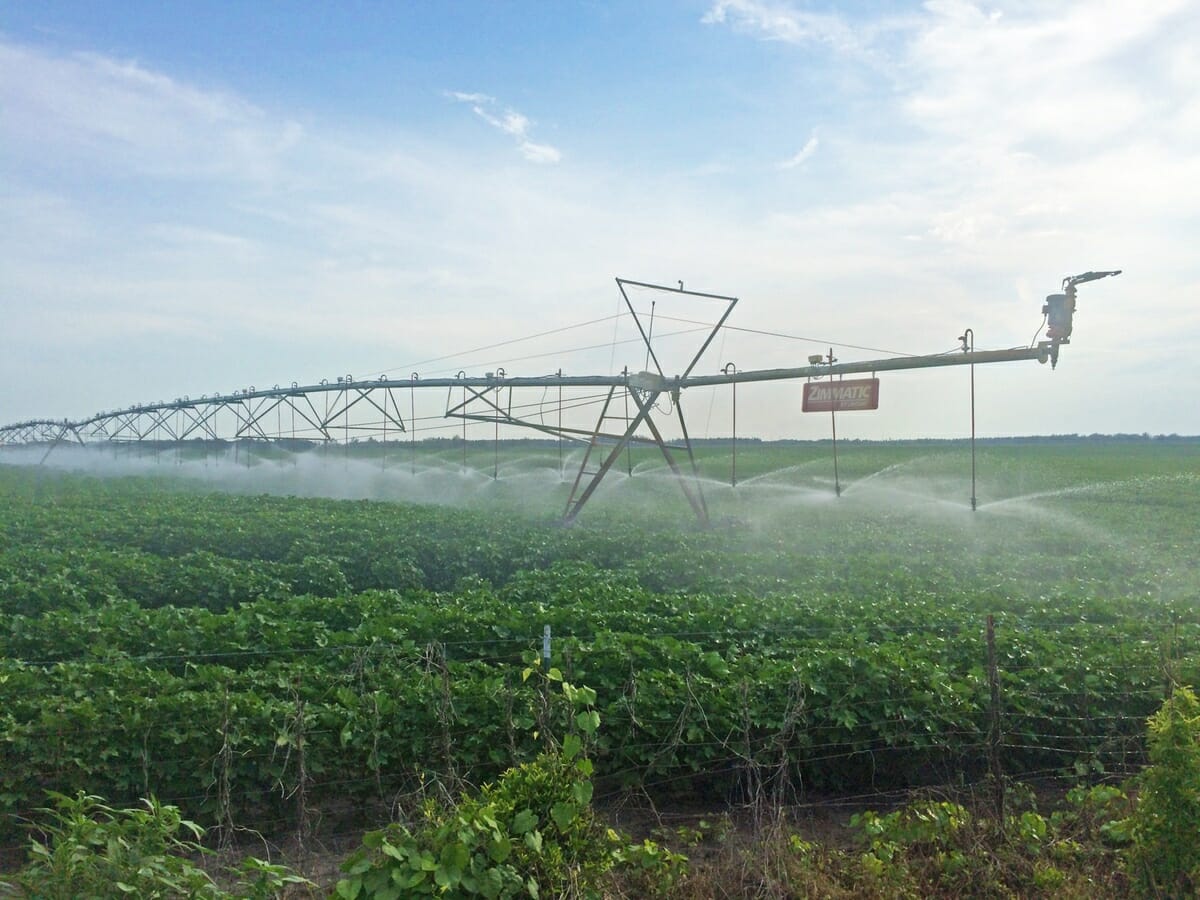Photo above: Local farmer, Joey Oswald III of JCO Farms, says that their irrigation has been running constantly throughout the months of June and July to keep up with the dry conditions.
The S.C. Drought Response Committee has upgraded the drought status of the entire state of South Carolina. Beaufort and Jasper counties have been upgraded to Incipient Drought (first stage of drought) Status by the Committee. All 46 counties in the state were upgraded a drought level with 18 counties moved into Incipient Drought level and 28 moved to Moderate Drought, the second drought stage. Beaufort and Jasper counties’ drought status was changed due mainly to soil conditions. Beaufort Jasper Water & Sewer Authority reports, “From a water supply standpoint, lake levels in the Savannah Basin are at seasonable levels and BJWSA remains in very good shape.”
The purpose of the moderate declaration is to increase awareness that drought conditions are intensifying. Water systems are asked to review their Drought Response Plans and Ordinances and implement as needed.
“It’s clear that drought is affecting folks all across the state. Irrigation has helped provide moisture to some crops, but it doesn’t replace a good soaking rain,” said S.C. Department of Agriculture Commissioner Hugh Weathers. “This summer’s weather furthers illustrates the partnership that farmers have with Mother Nature. The short-term forecast isn’t optimistic, but we’ll continue to pray for relief from the heat and drought.”
“Duke Energy strongly supports the Drought Committee’s moving the drought classification to moderate based on the very low stream flows, dry soil moisture and widespread low rainfall amounts over the last 30 days. Duke Energy is concerned with lake levels and is carefully managing hydroelectric operations under these conditions,” stated George Galleher, principal engineer with Duke Energy.
“Due to below normal rainfall over the past several months, streamflow levels have dropped considerably and are well below normal for this time of year,” reported Scott Harder, S.C. Department of Natural Resources hydrologist. “These low streamflows have caused small but steady declines in most of the state’s major reservoirs and most of the reservoirs are currently below their target levels.”
Bobby Brock with the Marlboro Water Company and Northeast Drought Committee said, “Several farmers in Marlboro County agree that the combination of hot weather and lack of rainfall is having an impact on their farming operations, particular those without irrigation. It certainly has affected the corn crop and will impact peanuts and soybeans if we do not get rain soon.”
According to Hope Mizzell, SC State Climatologist, “Rainfall totals within each county are highly variable, for example in York County some areas are reporting less than 2” since June 1 while others have received over 7”. Since our last Drought Committee meeting in mid-June, rainfall totals have decreased statewide. The drought impacts have been intensified due to the much above normal temperatures.”
Drought Response Committee Chairman Ken Rentiers stated, “The Committee will continue to monitor the situation closely and if conditions deteriorate the S.C. Department of Natural Resources will reconvene the committee as needed.









